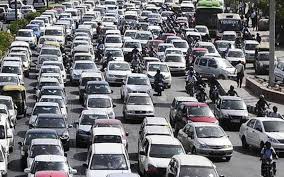
As you get older, your reflexes might get slower, and you might not react as quickly as you could in the past. You might find that you have a shorter attention span, making it harder to do two things at once. Stiff joints or weak muscles also can make it harder to move quickly. Loss of feeling or tingling in your fingers and feet can make it difficult to steer or use the foot pedals. Parkinson’s disease or limitations following a stroke can make it no longer safe to drive.
Safe driving tips:
Leave more space between you and the car in front of you.
Start braking early when you need to stop.
Avoid heavy traffic areas or rush-hour driving when you can.
If you must drive on a fast-moving highway, drive in the right-hand lane. Traffic moves more slowly there, giving you more time to make safe driving decisions.
Medications Can Affect Driving
Do you take any medicines that make you feel drowsy, lightheaded, or less alert than usual? Do medicines you take have a warning about driving? Many medications have side effects that can make driving unsafe. Pay attention to how these drugs may affect your driving.
Read medicine labels carefully. Look for any warnings.
Make a list of all of your medicines, and talk with your doctor or pharmacist about how they can affect your driving.
Don’t drive if you feel lightheaded or drowsy.
Be a Safe Driver
Maybe you already know that driving at night, on the highway, or in bad weather is a problem for you. Some older drivers also have problems when yielding the right of way, turning (especially making left turns), changing lanes, passing, and using expressway ramps.
Have your driving skills checked by a driving rehabilitation specialist, occupational therapist, or other trained professional.
Take a defensive driving course. Some car insurance companies may lower your bill when you pass this type of class. Organizations like AARP, American Automobile Association (AAA), or your car insurance company can help you find a class near you.
When in doubt, don’t go out. Bad weather like rain, ice, or snow can make it hard for anyone to drive. Try to wait until the weather is better, or use buses, taxis, or other transportation services.
Avoid areas where driving can be a problem. For example, choose a route that avoids highways or other high-speed roadways. Or, find a way to go that requires few or no left turns.
Ask your doctor if any of your health problems or medications might make it unsafe for you to drive. Together, you can make a plan to help you keep driving and decide when it is no longer safe to drive.
For More Information About Driving
National Highway Traffic Safety Administration
888-327-4236 (toll-free)
800-424-9153 (TTY/toll-free)
[email protected]
www.nhtsa.gov/road-safety/older-drivers
